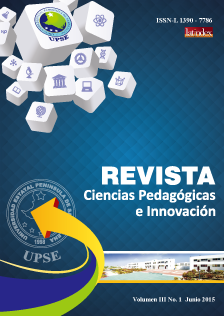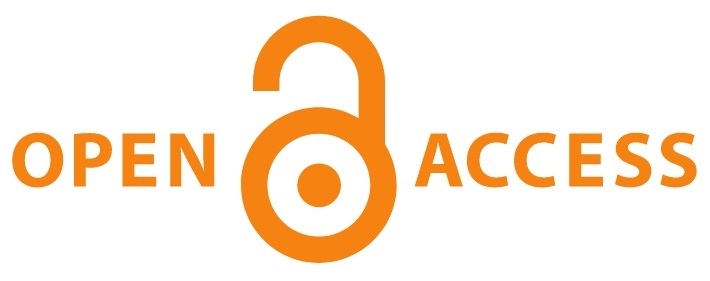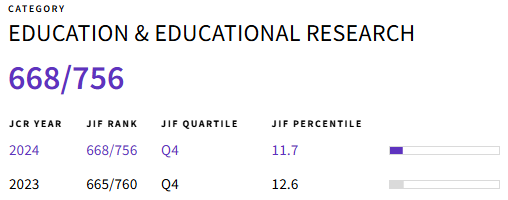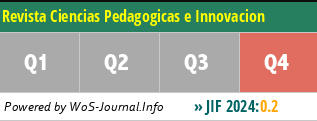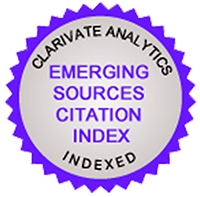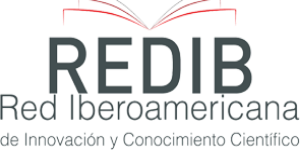Strategies for the use of a virtual environment in second language learning
DOI:
https://doi.org/10.26423/rcpi.v3i1.10Keywords:
Virtual Learning, Environment, English, teaching-learning process, ICTAbstract
The United Nations Educational, Scientific and Cultural Organization (UNESCO) has highlighted since 1948 the importance of learning a second language because of its professional, social, cultural, academic, and even personal potentials. Understanding that it moves towards a technological society, the processes of teaching and learning break the traditional schemes and incorporate new virtual learning environments that allow the implementation of technologies. By learning a foreign language, it tends to “pass” in somehow the knowledge about the structures and features of the mother tongue into the foreign language. This influence of the mother tongue on the foreign language is called “transfer” which often impedes production in the second language. The purpose of this research is to create a virtual learning environment in the English modules using Moodle for 114 UNEMI students of Health and Engineering Sciences, who are considered part of the generation “Y” through a single, factual and intrinsic case study, with a descriptive, heuristic and inductive level. The results of this research determined that the use of ICT tools when learning a second language presents greater opportunities for the teacher and students because they both can be separated with respect to the synchrony and this is not an obstacle, so learning is conducted with success; this support tool helps the acquired knowledge to become perfect with practice.
Downloads
References
Alexander, R.Culture and Pedagogy. International Comparisons in Primary Education. Oxford: Blackwell Publishers Ltd .2000.
Alexander, R.Towards Dialogic Teaching. Rethinking classroom talk. Thirsk, North Yorkshire: Dialogs.2004.
Barboza Norbis, L.“Informe sobre la organización curricular del dominio lingüístico delos Programas y Planes de Estudio de ANEP desde 1941a 2007” en ANEP. CODICEN. COMISIÓN DE POLÍTICAS LINGÜÍSTICAS EN LA EDUCACIÓN PÚBLICA: Documentos e Informes Técnicos de la Comisión de Políticas Lingüísticas en la Educación Pública. Diciembre de 2006 – noviembre de 2007. En línea: http://www.oei.es/pdfs/informe_linguistica_uruguay.pdf
Behares, Le, Brovetto, C. “Políticas lingüísticas en el Uruguay. Análisis de sus modos de establecimiento” en C. Brovetto (comp.): Primer Foro Nacional de Lenguas de ANEP, pp. 143-174. Montevideo: ANEP. CODICEN. (2009a)
Behares, Le, Brovetto, C.“Sobre las referencias al dominio lingüístico en las leyes de educación de Uruguay” en Encontro Internacional de pesquisadores de políticas lingüísticas 4, pp. 95-102. Santa Maria: Associação de Universidades Grupo Montevideo / Universidad Federal de Santa María. (2009b)
Brovetto, C. “Educación bilingüe de frontera y políticas lingüísticas en Uruguay” en Pro- Posições. Dossiê Educaçãofronteiriça Brasil/Uruguay, línguas e sujeitos, vol. 21, No 3 (Sept./Dec. 2010), pp. 25-43. Campinas: Faculdade de Educação, Unicamp. En línea: http://www.scielo.br/scielo.php?pid=S0103-73072010000300003&script=sci_arttext
Cristal, D. The Cambrigde encyclopedia of the English language. Cambrigde. CUP. 1995.
Corina, J. y Dirnestein, P. 2009. Diseño curricular y nuevas generaciones. Editorial Virtual Argentina.
Fuertes, P. y Samaniego, E. El Inglés con fines específicos: Rasgos distintivos). Documento en línea. Disponible en [http://www.pedrofuertes.net/uploads/ESP.pdf]. Consultadoen: [20 de agosto de 2014]
Hayes, D.“Planning for success: Culture, engagement and power in English language education innovation” en C. Tribble (ed.): Managing
change in English language teaching: Lessons from experience, pp. 47-60. London: British Council. Enlínea: http://www.teachingenglish.org.uk/sites/teacheng/ files/B330%20MC%20in%20ELT%20book_v7.pdf. 2012
Levy, M.Computer-Assisted Language Learning: Context and Conceptualization. Oxford: Oxford University Press. 1997. Ley No 18.437. Ley General de Educación”. Montevideo, 12 de diciembre de 2008. En línea: http://www.parlamento.gub.uy/ leyes/AccesoTextoLey.asp?Ley=18437&Anchor=
Murray, D, Christison, Ma.“Understanding innovation in English language education: Contexts and issues” en C. Tribble (ed.): Managing change in English language teaching: Lessons from experience, pp. 61-74. London: British Council. Enlínea: http://www.teachingenglish.org.uk/ sites/teacheng/files/B330%20MC%20in%20ELT%20
book_v7.pdf. 2012.
Nicolás, B. Las estrategias de aprendizaje en idioma inglés.
Orozco, J. El Docente y el Aula. Universidad Estatal de Milagro. 2011
Rubio, M. Factores que intervienen en el aprendizaje de una segunda lengua. Revista digital innovación y experiencias educativas [en línea]. 21 de noviembre 2011, nº 46. Consultado en: [20 de octubre de 2014]. Disponible en [http://www.csif.es/archivos/andalucia/ensenanza/revistas/iee/Numero_46/MARIA_DEL_CARMEN_RUBIO_OSUNA_02.pdf].
Salaberry, Mr. “The Use of Technology for Second Language Learning and Teaching: A Retrospective” en The Modern Language Journal, vol. 85, No 1, Special Issue: A Century of Language Teaching and Research: Looking Back and Looking Ahead, Part 2 (Spring), pp. 39-56. 2001
Spada, N.“Communicative Language Teaching: Current Status and Future Prospects” en J. Cummins; C. Davison (eds.): International Handbook of English Language Teaching, Part 1, pp. 271-288. New York: Springer Science and Business Media. Serie Springer International Handbooks of Education 15. 2007.
Stanley, G. Language Learning with Technology. Ideas for integrating technology in the classroom. Cambridge: Cambridge University Press.2013
Stoller, F. “Innovation as the hallmark of effective leadership” en M. A. Christison; D. Murray (eds.): Leadership in English language education: Theoretical foundations and practical skills for changing times, pp. 73-84. New York: Routledge.2009
Stoller, F. “Catalyst for innovation” en M. A. Christison; F. L. Stoller (eds.): A handbook for language program administrators (Second edition). Miami: Alta Book Center. 2012.
Tribble, C. Managingchangein English language teaching: Lessons from experience. London: British Council. 2012. Enlínea: http:// www.teachingenglish.org.uk/sites/teacheng/files/B330%20MC%20in%20ELT%20book_v7.pdf
Valenzuela, J. Lingüística contrastiva inglés-español: Una visión general. Documento en línea. Disponible en [http://www.um.es/lincoing/jv/2002%20Contrastivo%20Carabela.pdf]. Consultado en: [20 de septiembre de 2014]
Cambridge: MIT Press.
Vygotsky, LS. Thought and Language. Cambridge: MIT Press.1986
Wells, G. Dialogic Inquiry: Towards a Sociocultural Practice and Theory of Education. Cambridge: Cambridge University Press. 1999
Downloads
Published
Issue
Section
License
El titular de los derechos de autor de la obra, otorga derechos de uso a los lectores mediante la licencia Creative Commons Atribución-NoComercial-CompartirIgual 4.0 Internacional. Esto permite el acceso gratuito inmediato a la obra y permite a cualquier usuario leer, descargar, copiar, distribuir, imprimir, buscar o vincular a los textos completos de los artículos, rastrearlos para su indexación, pasarlos como datos al software o usarlos para cualquier otro propósito legal.
Cuando la obra es aprobada y aceptada para su publicación, los autores conservan los derechos de autor sin restricciones, cediendo únicamente los derechos de reproducción, distribución para su explotación en formato de papel, así como en cualquier otro soporte magnético, óptico y digital.

